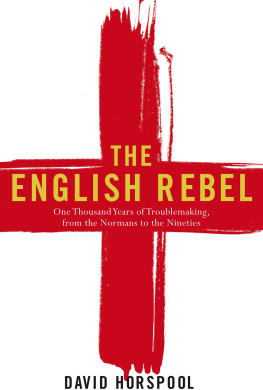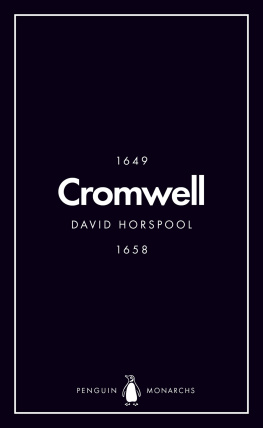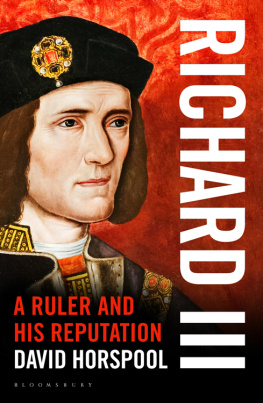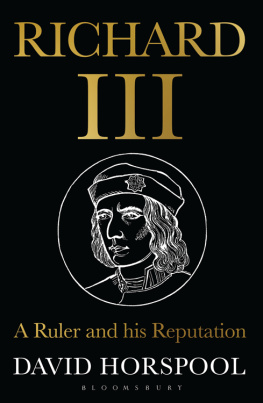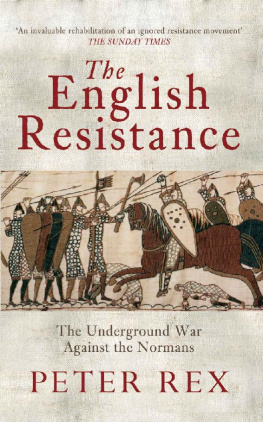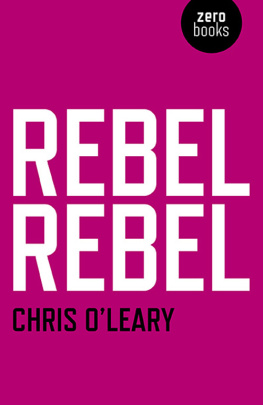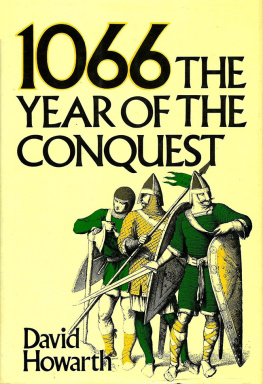The English Rebel
One Thousand Years of Troublemaking, from the Normans to the Nineties
DAVID HORSPOOL
VIKING
an imprint of
PENGUIN BOOKS
VIKING
Published by the Penguin Group
Penguin Books Ltd, 80 Strand, London WC2R 0RL , England
Penguin Group (USA) Inc., 375 Hudson Street, New York, New York 10014, USA
Penguin Group (Canada), 90 Eglinton Avenue East, Suite 700, Toronto, Ontario, Canada M4P 2Y3
(a division of Pearson Penguin Canada Inc.)
Penguin Ireland, 25 St Stephens Green, Dublin 2, Ireland (a division of Penguin Books Ltd)
Penguin Group (Australia), 250 Camberwell Road, Camberwell, Victoria 3124, Australia
(a division of Pearson Australia Group Pty Ltd)
Penguin Books India Pvt Ltd, 11 Community Centre, Panchsheel Park, New Delhi 110 017, India
Penguin Group (NZ), 67 Apollo Drive, Rosedale, North Shore 0632, New Zealand
(a division of Pearson New Zealand Ltd)
Penguin Books (South Africa) (Pty) Ltd, 24 Sturdee Avenue, Rosebank, Johannesburg 2196, South Africa
Penguin Books Ltd, Registered Offices: 80 Strand, London WC2R 0RL , England
www.penguin.com
First published in 2009
Copyright David Horspool, 2009
The moral right of the author has been asserted
All rights reserved
Without limiting the rights under copyright reserved above, no part of this publication may be reproduced, stored in or introduced into a retrieval system, or transmitted, in any form or by any means (electronic, mechanical, photocopying, recording or otherwise), without the prior written permission of both the copyright owner and the above publisher of this book
ISBN: 978-0-67-091826-3
For Jules
Men would be angels, angels would be gods.
Aspiring to be gods, if angels fell,
Aspiring to be angels, men rebel.
Alexander Pope, An Essay on Man (17334)
Illustrations
| Et fuga verterunt Angli: the last panel of the Bayeux Tapestry. Photograph Michael Holford |
| Effigy of Geoffrey de Mandeville, d. 1144, in Temple Church, London. From Thomas Archer, Pictures and Portraits Illustrative of English and Scottish History, Vol. One, 1878 |
| Engravings of leaden tokens and an ampulla, worn by pilgrims to the shrine of Thomas Becket. From Thomas Archer, Pictures and Portraits Illustrative of English and Scottish History, Vol. One |
| Design for a window in Arundel Castle showing King John in the act of signing the Great Charter. From C. Wright, The History and Description of Arundel Castle, Sussex, 1818 |
| The execution of Thomas of Lancaster, from the Luttrell Psalter (c.132535). British Library BL Additional 42130, f 56 |
| Simon de Montforts death and dismemberment after Evesham, 1265, in the Chronica Roffense. British Library Cotton MS Nero D ii, f177 |
| A fifteenth-century illustration from Froissarts Chronicle shows the meeting of Wat Tyler with Richard II, and Tylers death at the hands of William Walworth. British Library Royal MS 18 E.1, f175 |
| Sir John Oldcastle is hung in chains and burned. From John Foxes Book of Martyrs, 1563 |
| Lord Saye and Sele brought before Jack Cade, an engraving (by W. Ridgway). From Thomas Archer, Pictures and Portraits Illustrative of English and Scottish History, Vol. One |
| Robert Kett, under the Oak of Reformation at his Great Camp on Mousehold Heath, 1549. From Frederick Russell, Ketts Rebellion in Norfolk: Being a history of the great civil commotion that occurred at the time of the reformation, in the reign of Edward VI, 1859 |
| Sir Thomas Wyatt the younger. National Portrait Gallery, London |
| Severed head of Guy Fawkes, an illustration from Mischeefes mysterie: or, Treasons master-peece, the powder plot by Francis Herring (1617). British Library G 1603 |
| A drawing of the Powder Plot Cellar beneath the Houses of Parliament, demolished in 1833. From Philip Sidney, A History of the Gunpowder Plot: The conspiracy and its agents, 1905 |
| John Lilburne. British Library C 37d51(5) |
| The execution of James Scott, Duke of Monmouth. Engraving by T. Sherratt, 1869, from an original by R. Smirke (authors collection) |
| William Hogarths drawing of John Wilkes, 1763. British Museum Cc,2.206 |
| James Gillrays print of a Gordon Rioter (1780). British Museum 1851.0901.24 |
| The arrest of the Cato Street Conspirators, 1820. British Museum 1862.1217.554 |
| An engraving of the Chartist meeting at Kennington Common on 10 April 1848. Illustrated London News |
| Force-feeding a suffragette in prison, May 1913. British Library 19111914 LON MLD5NPL |
| The General Strike, May 1926. Illustrated London News |
| The Stoke Newington 8. Roy Knipe |
| Anti-Poll Tax demonstration, London, 31 March 1990. News Group Newspapers |
Acknowledgements
Rebels in English history have been on my mind at least since I was given a copy of R. J. Unsteads book Princes and Rebels by my parents. I dont suppose they would have expected it to take more than thirty years for the gift to bear fruit, but it is thanks to them, first of all, that it has. My mother knows how much effort goes into writing a book and preparing it for publication, and has been a reassuring comparer of notes. My father has read this book chapter by chapter as it was being written, and has proved an ideal constructive critic, as well as a generous lender of Oxford Histories. My much-missed uncle Lodewijk Blok, who died just as I was coming to the end of writing this, was a historian of the Netherlands who was always encouraging of his nephews ideas about English history. My family debts extend to my brother, and to my mother- and father-in-law, who provided in Dorset one of the many different homes in which the book took shape. My second home has been the London Library, where all things books, reading room and staff are congenial to reading, writing and thinking.
At the Times Literary Supplement, my editor, Peter Stothard, was uncomplainingly accommodating, while my colleagues particularly Robert Potts and Adrian Tahourdin were always supportive. Rupert Shortt has not only been a wonderful sounding-board, but also an example of authorial professionalism. Martin Smiths help with picture research was invaluable. Outside the office, both Harry Mount and Mark Bostridge have repeatedly bolstered my confidence, and shown how friendship and authorship neednt be mutally exclusive. To Harry I owe also the recommendation of the peerless Douglas Matthews to index the book. Katie Bonds shared experience of the publishing process has kept me sane.
Peter Straus was the first person to convince me that this book was one worth writing. In finding a home for it at Viking, he also introduced me to the ideal editor in Kate Barker, who constantly realigned my thinking, and patiently helped me turn a series of chapters into a book. Will Hammond, Sarah Hulbert and Mark Handsley have all carried through the good work.
Several wiser heads have kindly agreed to read the book and share their thoughts before publication, including Professors Diane Purkiss, Peter Hennessy, David Kynaston and Linda Colley, as well as Ferdinand Mount. Professor Nicholas Vincent of the University of East Anglia did even more, combing through the text and giving me the benefit of his extraordinary erudition and insight. With such formidable help, errors shouldnt remain, but those that do are most certainly my own fault.

